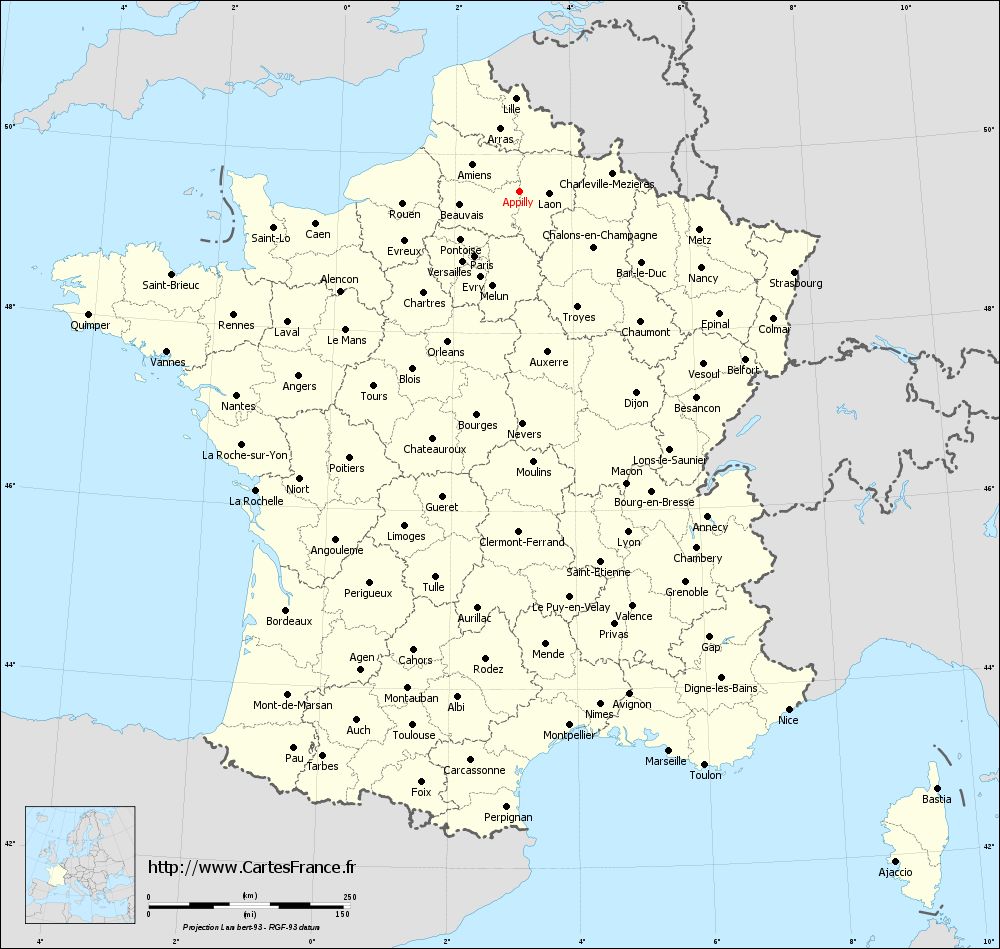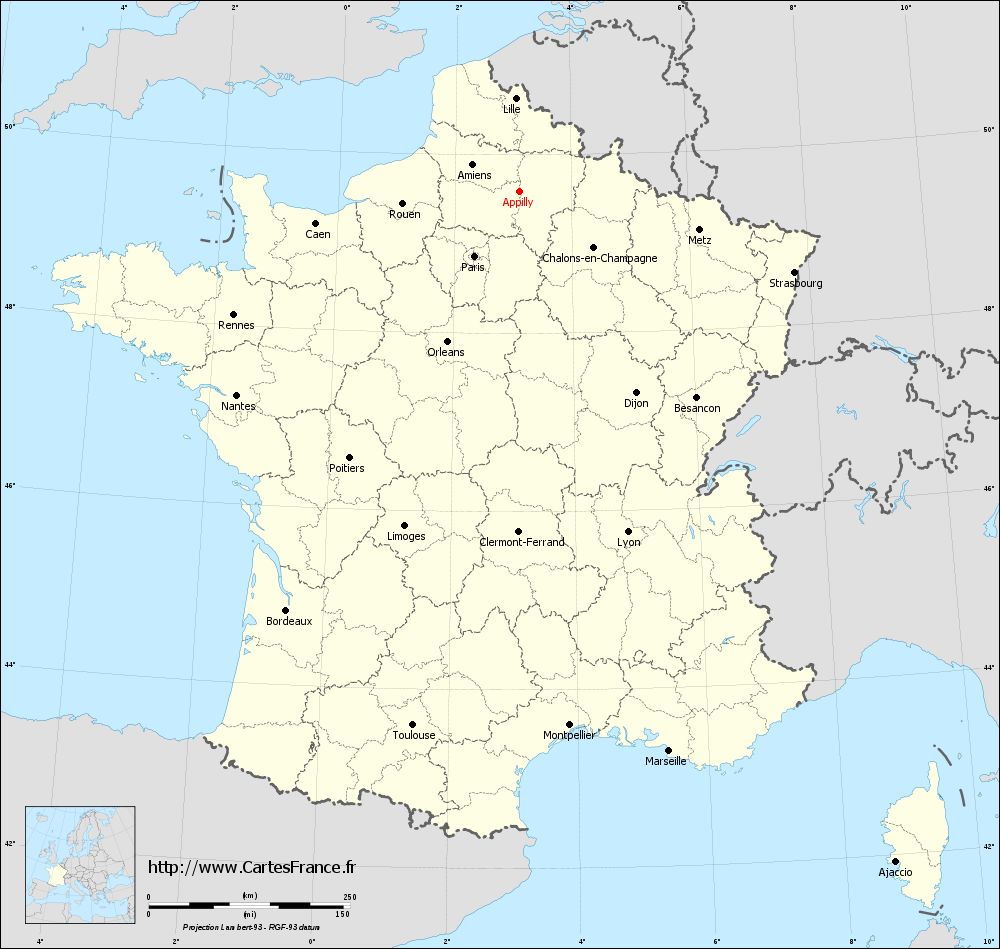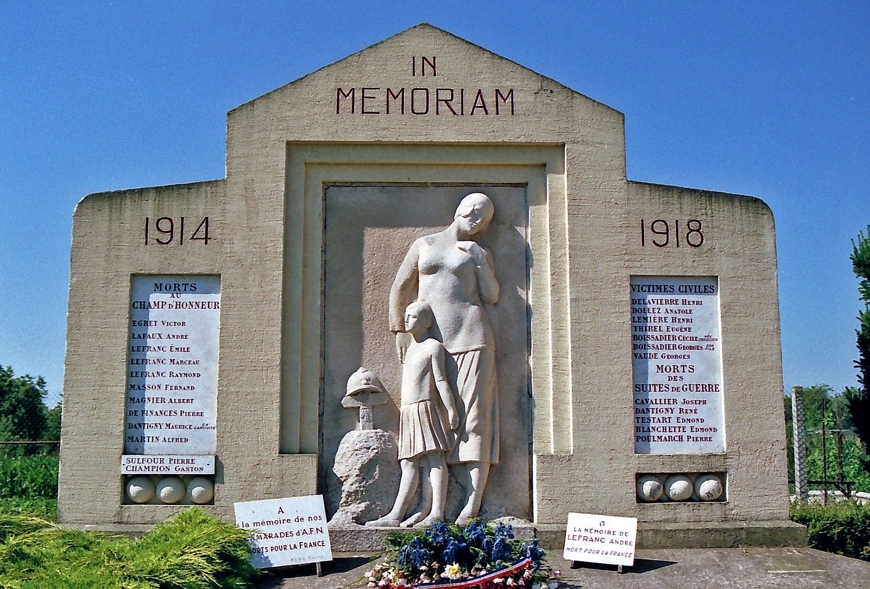Appilly
Appilly is a commune with 519 inhabitants (as of January 1, 2011 ) in the department of Oise in the Picardie region. It belongs to the district Compiegne, Noyon to the canton and municipal Pays Noyonnais Association.
Geography
Appilly lies on the Oise to an average height of 48 meters above sea level, 75 km north-west of Reims, 27 kilometers northwest of Soissons, the seat of the Prefecture for the district, and about 9 kilometers east of Noyon, the cantonal capital. The village is surrounded by the neighboring communities Mondescourt, Brétigny and Quierzy. The municipality has an area of 4.57 square kilometers.
Appilly is a climate of type Cfb ( according to Köppen and Geiger ) assigned: Warm Temperate rain climate ( C ), fully wet ( f), the warmest month below 22 ° C, at least four months above 10 ° C ( b). There is a maritime climate with moderate summer.
History
The Seigneurie Appilly was first mentioned on May 2, 708 and belonged to the Abbey of Saint - Bertin at Saint- Omer ( Pas -de- Calais ). Towards the end of the 10th century confirmed the French king Lothar that Appilly the Abbey Saint -Eloy shelter in Noyon. The village consisted of three fiefs, northern fief to the present Mairie belonged to the Abbey of Saint -Eloy in Noyon, a fief of the Seigneurs of Varesnes was called Canny, the third fief was OFFEMONT and belonged to the lords of Nesle. The northern fief had a manor house and a tithe barn. In 1218 it came into worldly possessions, his seigneur named after the village. The Hundred Years' War (1337-1453) it was destroyed by the Bourguignons. The mansion was converted in the 17th century in a farm and sold in 1615 to the Marquis of Nantouillet (Seine- et- Marne). As the villages Mondescourt, Pontoise -lès- Noyon and Baboeuf reached the fief Canny, finally in possession of the Seigneurs of Varesnes. 1622 gave away Louis de BARBANÇON Canny Louis Antoine Duprat, marquis de Nantouillet.
History Estays
Traces of settlement in the Gallo -Roman period (52 BC to 486 AD) were discovered in 1803 in the hamlet Estay. The feud came Estay 1155 in the possession of the monastery Longpont. 1609 belonged to the fief Joram de Vrévin, a lieutenant general of Bailliage and PREVOTE of Chauny, in the 18th century Méniolle d' Arman Court family.
Demographics
Culture and sights
The castle was built in 1766 by Estay. In the residential parts are obtained, which date from the years 1766 and 1782. The pigeon-house was also built in the 18th century. The other elements of the court date from the early 19th century and from the years 1925 and 1930. The castle stands in the middle of an English landscape garden. It is privately owned.
The parish church Saint -Martin was built in the 19th century, destroyed and rebuilt in the 20th century. In the church there is a statue of the Virgin and Child from the 16th century, which was classified in 1913 as a monument historique ( historic monument '). In the cemetery at the church, the grave of Urevin seigneur d' Estay is from the year 1636th
Economy and infrastructure
The Mill of Appilly was first documented in 1151. It was a corn mill which was powered by Bach Grandrû. In the 17th century it belonged to the loan Canny. It was in 1830 modernized and restored in the late 19th century, but was destroyed in the First World War ( 1914-1918).
1829 was set up on the grounds of the castle of Estay a sugar factory for the processing of sugar beets. 1851 90 seasonal workers were employed there. In 1893 the factory stopped production.
The former dairy of Appilly belonged to the company of the Laiterie Fermiers Réunis based in Paris. In 1962, the company employed more than ten people.
South of the village runs a side channel of the Oise, the ship lock of Saint- Hubert is located in the southwest.
Appilly has a train station, it is of trains on the line Paris -Nord - the TER approached Busigny ( Nord ) Picardy.
The municipal area protected geographical indication ( PGI ) for poultry ( Volailles de la Champagne) apply.








